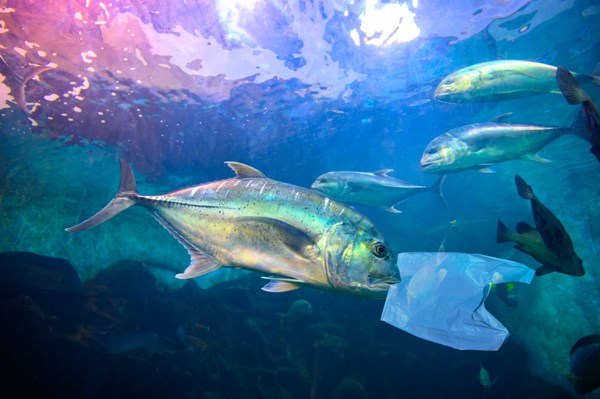Trillions of barely visible pieces of plastic are floating in the world’s oceans, from surface waters to the deep seas. These particles, known as microplastics, typically form when larger plastic objects such as shopping bags and food containers break down.
Researchers are concerned about microplastics because they are minuscule, widely distributed and easy for wildlife to consume, accidentally or intentionally. In a newly published study It was examined how marine fish – including species consumed by humans – are ingesting synthetic particles of all sizes.
In the broadest review on this topic that has been carried out to date, was found that, so far, 386 marine fish species are known to have ingested plastic debris, including 210 species that are commercially important. But findings of fish consuming plastic are on the rise. This could be happening both because detection methods for microplastics are improving and because ocean plastic pollution continues to increase.
Similarly, in the last decade alone, the proportion of fish consuming plastic has doubled across all species. Studies published from 2010-2013 found that an average of 15 percent of the fish sampled contained plastic; in studies published from 2017-2019, that share rose to 33 percent.
This is not just a wildlife conservation issue. Researchers don’t know very much about the effects of ingesting plastic on fish or humans. However, there is evidence that that microplastics and even smaller particles called nanoplastics can move from a fish’s stomach to its muscle tissue, which is the part that humans typically eat. Our findings highlight the need for studies analyzing how frequently plastics transfer from fish to humans, and their potential effects on the human body.
Our review is a step toward understanding the global problem of ocean plastic pollution. Of more than 20,000 marine fish species, only roughly two percent have been tested for plastic consumption. And many reaches of the ocean remain to be examined. Nonetheless, what’s now clear to us is that “out of sight, out of mind” is not an effective response to ocean pollution – especially when it may end up on our plates.
Source: https://www.maritime-executive.com/editorials/the-fish-we-eat-are-eating-plastic


